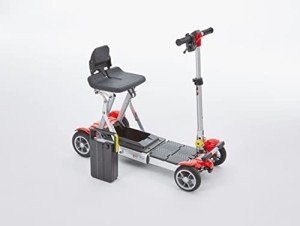Understanding Mobility Devices: Enhancing Independence and Quality of Life
In today's hectic world, the desire for mobility is universal. However, certain medical conditions or age-related obstacles can impede motion, causing a continuous look for assistance. Mobility devices act as vital tools to boost independence, improve lifestyle, and enable people to engage totally in their neighborhoods. This post supplies a detailed introduction of mobility devices, including their types, features, selection criteria, and more.
Types of Mobility Devices
Mobility devices range from simple aids to complex devices, tailored to meet numerous needs. Below is a table summarizing common kinds of mobility devices:
| Type of Device | Description | Perfect For |
|---|---|---|
| Walkers | Four-legged support devices that supply superior stability while walking. | People requiring additional support. |
| Walking sticks | Single or three-legged sticks that enhance balance and assistance walking. | Those with small mobility troubles. |
| Wheelchairs | Seats mounted on wheels, available in handbook and electric versions. | Individuals with restricted or no mobility. |
| Scooters | Electric cars developed for outdoor usage and ease of navigation. | Those who can't stroll fars away. |
| Crutches | Devices that assist people move weight away from a hurt leg. | People recuperating from leg injuries. |
| Rollators | Walkers with wheels, seats, and brakes for boosted mobility. | Users requiring rest alternatives while walking. |
| Raise Chairs | Reclining chairs that help users in standing and sitting down. | Seniors or those with mobility constraints. |
| Mobility Scooters | Small electric automobiles for minimal mobility, frequently used outdoors. | People requiring support over fars away. |
Key Features of Mobility Devices
When selecting a mobility gadget, numerous key functions ought to be thought about to ensure optimum functionality and ease of use:
- Weight Capacity: Understanding the device's weight limitation is crucial for security and effectiveness.
- Adjustability: Devices must be adjustable in height and width to fit the user easily.
- Portability: Lightweight and foldable choices are vital for users who travel or need transport.
- Stability and Safety: Look for features like anti-tip wheels and tough structures to enhance security.
- Reduce of Use: Simple mechanisms and user-friendly styles can make a substantial difference in everyday usage.
- Convenience: Ergonomic styles and cushioned seats can enhance the user experience.
Picking the Right Mobility Device
Selecting the ideal mobility device can be a daunting job. Here are some steps to guide the decision-making procedure:
- Assess Needs: Evaluate the individual's mobility challenges and day-to-day activities.
- Speak with a Professional: Engage healthcare specialists who can offer recommendations based on the person's physical condition.
- Trial Options: If possible, trial different devices to figure out convenience and performance.
- Evaluation Budget: Consider the cost of the device, consisting of any extra functions or adjustments needed.
- Research Options: Determine the best brand names and designs by reading reviews and comparisons.
Table: Comparative Analysis of Popular Mobility Devices
| Device | Advantages | Disadvantages |
|---|---|---|
| Walkers | Excellent stability, promotes strolling. | Large, might limit movement in small areas. |
| Walking canes | Lightweight, boosts balance. | Might not offer adequate support for serious mobility issues. |
| Wheelchairs | Suitable for those with significant mobility constraints. | Can be cumbersome, particularly in indoor environments. |
| Scooters | Great for outdoor use, easy to maneuver. | Limited indoor usability, much heavier. |
| Rollators | Supplies rest choice, easy to move. | May require more area than standard walkers. |
| Raise Chairs | Comfy, assists shift from sitting to standing. | More expensive, bigger footprint. |
Regularly Asked Questions (FAQs)
1. What is a mobility gadget?
A mobility device is any tool created to assist individuals in moving and navigating their environment. This consists of walkers, wheelchairs, scooters, and crutches.
2. How do I understand which mobility gadget is best for me?
Consider your particular mobility obstacles, physical capabilities, and way of life needs. Consulting with healthcare specialists can also offer customized suggestions.
3. Are mobility devices covered by insurance coverage?
Many insurance strategies, consisting of Medicare, may cover specific mobility devices. It's essential to inspect with your insurance coverage company for specific protection information.
4. Can foldable electric mobility scooters rent a mobility gadget rather of purchasing one?
Yes, many medical supply stores and pharmacies use rentals for mobility devices. This choice is useful for people with short-term mobility problems.
5. How can I keep my mobility device?
Routine upkeep is essential. It includes cleaning up the device, looking for wear and tear, and ensuring all parts are working correctly.
The Impact of Mobility Devices on Quality of Life
Mobility devices significantly enhance the lifestyle for people with limited mobility. They foster independence, motivate social interaction, and boost access to vital services and leisure activities.
- Increased Independence: Users can browse their areas, go to occasions, and engage in hobbies without counting on others.
- Social Engagement: Mobility devices facilitate involvement in social events, thus combating feelings of seclusion.
- Boosted Safety: Devices offer stability and minimize the threat of falls, promoting user confidence.
Mobility devices are more than simply tools for movement; they are gateways to self-reliance and quality living. By comprehending the different kinds of mobility aids offered, their key features, and considerations for picking the ideal gadget, people can make educated decisions about their mobility requires. Eventually, the best mobility gadget can result in a more active, fulfilling life. Whether it's a walker, wheelchair, or scooter, the ideal choice contributes considerably to enhancing the mobility and self-reliance of users.

